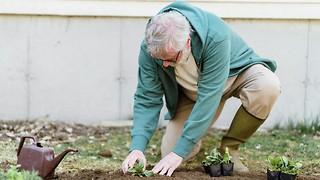The House of Horrors
Laura Robinson explores the gory history of Paris’ Théâtre du Grand-Guignol

1897, Paris. Oscar Méténier, a chien de commissaire – one who accompanies prisoners to their deaths - and a writer, buys a chapel in the 9th arrondissement and turns it into a theatre, its purpose being to provide a space for his naturalistic plays. Despite being the smallest arts venue in Paris at the time, it was named ‘le Théâtre du Grand-Guignol’, translated as ‘the Big Puppet Show’, Guignol being the French puppet equivalent to Britain’s Punch. Situated in the rue Chaptal in Montmartre, a street brimming with prostitutes and bohemian artists, Méténier constructed a unique space from the reverted chapel: a shady, dark street leading into a small, highly intimate Gothic-style chapel, with two large, carved angels hanging over the small stage. Here he would stage his naturalistic plays, the characters of which were largely drawn from the criminal underbelly of Parisian life. Méténier’s productions, including ‘Lui!’, a short tale of a prostitute’s entrapment by a serial killer in her bedroom, were successful although prone to demands for censorship. However, it would only be after the conclusion of his directorial role that the Grand-Guignol would become synonymous with graphic, heart-pounding horror.
One year later, in 1898, Max Maurey undertook the role of the Grand-Guignol’s director – the exacting reasoning behind Méténier’s surrender of it still unclear – and until 1914 established it as a ‘House of Horrors’. Whilst Méténier primarily wrote the productions himself during his tenure, Maurey’s reign brought in André de Lorde, a playwright dubbed ‘Prince de la Terreur’, or Prince of Fear, by his contemporaries. Working in collaboration with Alfred Binet, a psychologist, de Lorde would produce a number of unsettling plays that focused on insanity and the mentally deranged. Characters would include a necrophiliac in ‘L’Homme de la Nuit’, and a father committing infanticide against his daughter in the chilling ‘La Dernière Torture’. Playing upon the public’s fear of disease and its immutable spread, many productions during this era focused on characters infected with rabies and syphilis, tapping into a reality that was all too familiar with its audience. Maurey measured the success of his productions not by the income they generated, but by the number of spectators that fainted during each one. Whether to add to the general vibe and publicity of his theatre, or out of human compassion for the faint-hearted among his clientele, he hired a médécin du service for each run of productions, and introduced comedy into the program, creating la douche ecossaise, a ‘hot and cold shower’ of terrifying dramas and farcical comedies. Whilst some spectators fainted, others discovered a sexual energy in the scenes being relayed to them; the boxes underneath the balcony, originally used by nuns to watch church services, were discreet enough for sexual wantonness to occur. This was at times, however, to the disgruntlement of the actors, who would call for silence in the boxes, ensuring that the moans on the stage would not be mixed with those from other sources.

With the onset of the First World War in 1914, Camille Choisy was instated as director, and the Grand-Guignol reached the gory, blood-drenched summit that it is known for today. Placing emphasis upon the spectacle rather than the narrative, he bought an operating table as well as equipment for one production, and hired actress Paula Maxa, who would become the Grand-Guignol’s resident Scream Queen. Over the course of the productions she acted in, she would be raped over 3000 times, disembowelled, guillotined and poisoned by a scorpion, as well as meeting many more overtly sadistic fates. Overall, she was murdered more than 10,000 times using more than 60 different methods. Maxa, who enjoyed immense popularity during her time at the Grand-Guignol – ‘the Sarah Bernhardt of the impasse Chaptal’ – was incredibly aware of the attraction of the theatre as a space that met with reality: “In the cinema you have a series of images. Everything happens very quickly. But to see people in the flesh suffering and dying at the slow pace required by live performance, that is much more effective. It’s a different thing altogether”.
After Choisy’s business partner, Jack Jouvin, took the reins in 1930, the popularity of the theatre waned dramatically. A shift from blood spattering horror to a focus on psychological drama, as well as the removal of crowd favourite Maxa and a controlling, isolated managerial style, Jouvin was the death knell for the theatre. With the terror and aftermath of World War II lingering in the public consciousness, and low audience numbers, the theatre closed in 1962.
After entertaining the masses with morbidly honest ‘slice of life’ productions and outrageously sadistic, gory masterpieces, the theatre could not compete with the horrors that had grasped the world. As the theatre’s final director, Charles Nonon, declared: “We could never compete with Buchenwald. Before the war, everyone believed that what happened on stage was purely imaginary; now we know that these things – and worse – are possible.”
 News / Uni Scout and Guide Club affirms trans inclusion 12 December 2025
News / Uni Scout and Guide Club affirms trans inclusion 12 December 2025 News / Cambridge Vet School gets lifeline year to stay accredited28 November 2025
News / Cambridge Vet School gets lifeline year to stay accredited28 November 2025 Science / Did your ex trip on King’s Parade? The science behind the ‘ick’12 December 2025
Science / Did your ex trip on King’s Parade? The science behind the ‘ick’12 December 2025 News / Cambridge study finds students learn better with notes than AI13 December 2025
News / Cambridge study finds students learn better with notes than AI13 December 2025 News / Pembroke to convert listed office building into accom9 December 2025
News / Pembroke to convert listed office building into accom9 December 2025







